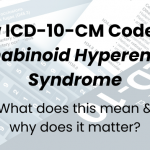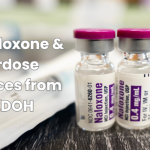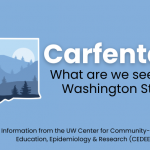News
December 1, 2025
Congratulations to Dr. Andrew Saxon of the NIDA CTN’s Pacific Northwest Node!

ADAI wants to issue a hearty CONGRATULATIONS to Andrew Saxon, MD, the recipient of the 2025 Outstanding Achievement and Service Award from the American Academy of Addiction Psychiatry (AAAP). [Dr. Saxon is a long-time member of the NIDA Clinical Trials Network’s Pacific Northwest Node, located at ADAI and has been working with many of our staff…
October 17, 2025
New ICD-10-CM Code for Cannabinoid Hyperemesis Syndrome: R11.16

A new ICD-10-CM diagnosis code for Cannabinoid Hyperemesis Syndrome (CHS) went into effect on October 1, 2025. ICD-10-CM codes are used to classify different medical diagnoses, symptoms, and procedures in health records and for billing and claims processing. To date, most health systems have documented CHS using a combination of codes for nausea and vomiting, such…
October 16, 2025
New Videos in the Mental Health Topics for Non-Therapist Professionals Series

The Mental Health Topics for Non-Therapist Professionals series on the LearnAboutTreatment.org website, produced by the ADAI State Opioid Response Training Team, is for providers who work with people with a substance use disorder (SUD) but are not trained as mental health therapists. The goal is to boost knowledge of mental health issues, especially those common…
New Naloxone and Overdose Resources from the WA Department of Health

The WA State Department of Health (DOH) has some new resources out about naloxone and overdose. Issue Brief: The Risks of High-Dose Naloxone Products and Nalmefene for Community Opioid Overdose Response In this issue brief, DOH provides a summary of the current data and their recommendations on opioid overdose reversal medication types and dosages. Key…
September 26, 2025
Carfentanil: What Are We Seeing in Washington State?

From the UW Center for Community-Engaged Drug Education, Epidemiology & Research at the Addictions, Drug & Alcohol Institute The DEA recently reported that more than 50,000 fake pharmaceutical pills were seized by law enforcement in Western Washington. The pills were labeled with “M30” and designed to look like oxycodone. In recent years such pills typically…
July 17, 2025
Children Are Safer When Families Are Supported—Not Separated: Seattle Times Op-Ed

ADAI’s Susan Stoner, PhD, director of the WA State Parent-Child Assistance Program (PCAP) and the UW Fetal Alcohol and Drug Unit (FADU), co-authored a July 16, 2025 opinion piece in the Seattle Times with Jim Walsh, MD, Program Director of the Addiction Medicine Fellowship at Swedish. In the piece, Drs. Stoner and Walsh note recent…
January 10, 2025
High Potency Cannabis Leads to ER Visits, Illnesses for Some Users (KUOW with ADAI’s Beatriz Carlini)

This new article from KUOW/NPR describes some of the latest data and research related to serious health impacts from use of high-THC cannabis products and talks to ADAI’s Beatriz Carlini, PhD, MPH, director of our Cannabis Education & Research Program (CERP). The article describes increasing illnesses, ER visits, and deaths related to use of high-THC…
January 8, 2025
Washington Sees Spike in New Chemicals in Street Drugs, Fentanyl (Seattle Times with ADAI’s Caleb Banta-Green)

In this new article from the Seattle Times, ADAI’s Caleb Banta-Green, PhD, MPH, MSW, director of the UW Center for Community-Engaged Drug Education, Epidemiology & Research (CEDEER), says that the drug supply in Washington State is increasingly “messy,” with over 237 unique substances (some drugs, some not) found in 816 samples tested in just 6…
January 6, 2025
ADAI Highlights from 2024

HAPPY NEW YEAR from all of us at ADAI! ADAI had an extremely productive 2024, with tons of incredible work from our centers and teams and the development of a very exciting strategic plan that will help shape our future. As we start looking ahead, we first wanted to take a quick peek back at…
June 17, 2024
Third Space Toolkit: New Resource from ADAI’s CAAHS Supporting Telehealth for Substance Use Disorders

ADAI’s Center for Advancing Addiction Health Services (CAAHS), working with the Idaho Department of Health and Welfare, recently developed an interactive online toolkit, the Third Space Toolkit: Building Space for Telehealth in Libraries and the Community, to support the addition of “privacy pods” in Idaho public libraries for the purpose of providing private spaces for…
Next page
